Honorees recognized for achievements in heavy element chemistry, tectonics, microbial photosynthesis, geological processes, particle physics, and biomolecular engineering
Tag: Nuclear Physics
Caught in afterglow: 1st detection of Inverse Compton emission from dying gamma-ray burst
A dying star emits intense flashes of light called a gamma-ray burst. Most days, the Fermi gamma-ray space telescope detects these flashes. About 20 years ago, scientists predicted that a gargantuan energy level – tera-electron volts – would be detected…
Blowing bubbles: PPPL scientist confirms way to launch current in fusion plasmas
An obstacle to generating fusion reactions inside facilities called tokamaks is that producing the current in plasma that helps create confining magnetic fields happens in pulses. Such pulses, generated by an electromagnet that runs down the center of the tokamak,…
Blowing bubbles: PPPL scientist confirms way to launch current in fusion plasmas
An obstacle to generating fusion reactions inside facilities called tokamaks is that producing the current in plasma that helps create confining magnetic fields happens in pulses. Such pulses, generated by an electromagnet that runs down the center of the tokamak,…
Nuclear warheads? This robot can find them
Trust, but verify. — Ronald Reagan Picture a swarm of autonomous, three-foot rolling robots armed with smart detectors to support nuclear safeguards and verify arms-control agreements. The prototype of such robots, being developed by the U.S. Department of Energy’s (DOE)…
Nuclear warheads? This robot can find them
Trust, but verify. — Ronald Reagan Picture a swarm of autonomous, three-foot rolling robots armed with smart detectors to support nuclear safeguards and verify arms-control agreements. The prototype of such robots, being developed by the U.S. Department of Energy’s (DOE)…
Warning system for aviation exposure to solar energetic particles (WASAVIES)
Provide ICAO a mandatory information for cosmic ray radiation protection management of aircrews
SRNL radiation detection systems operating at ports of Tacoma and NY/NJ
AIKEN, S.C. (Nov. 1, 2019) – After years of development and testing, a radiation detection system developed by the Department of Energy ‘s Savannah River National Laboratory is now in full-scale operation at major United States shipping ports. In 2018,…
SRNL radiation detection systems operating at ports of Tacoma and NY/NJ
AIKEN, S.C. (Nov. 1, 2019) – After years of development and testing, a radiation detection system developed by the Department of Energy ‘s Savannah River National Laboratory is now in full-scale operation at major United States shipping ports. In 2018,…
SRNL radiation detection systems operating at ports of Tacoma and NY/NJ
AIKEN, S.C. (Nov. 1, 2019) – After years of development and testing, a radiation detection system developed by the Department of Energy ‘s Savannah River National Laboratory is now in full-scale operation at major United States shipping ports. In 2018,…
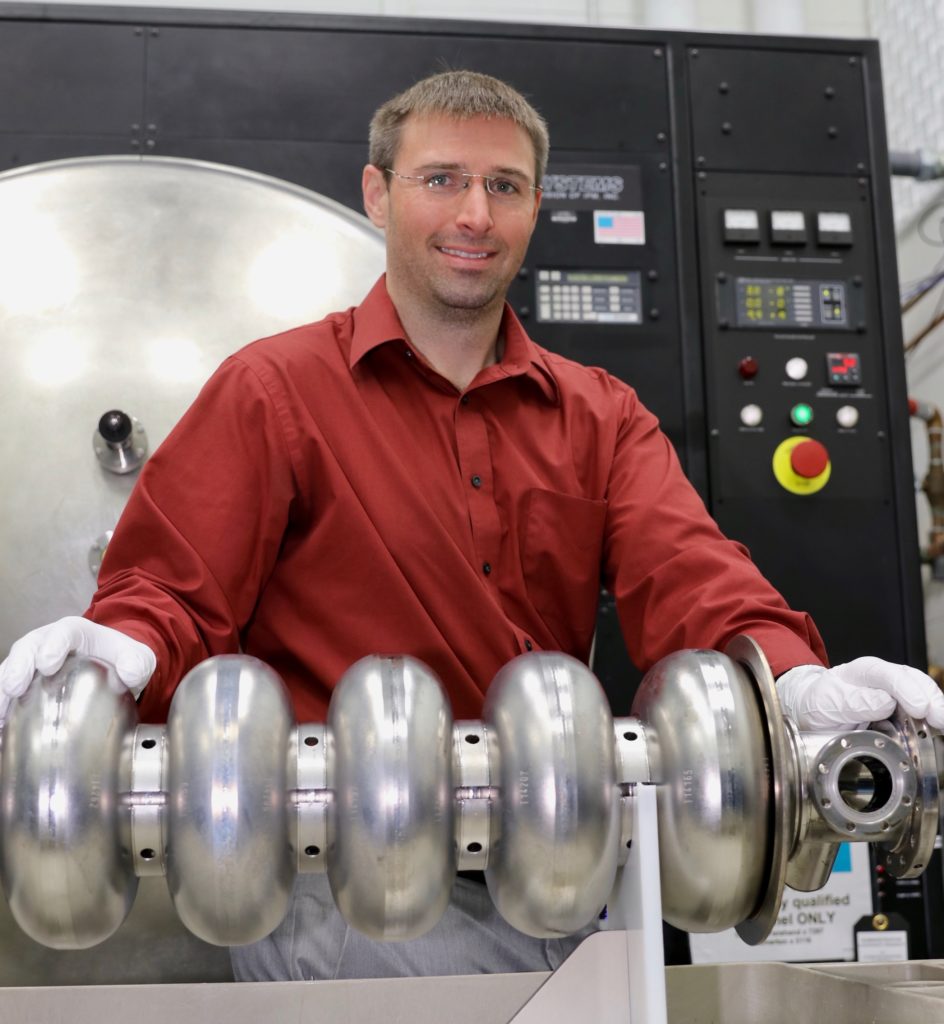
Cooking Up a New Theory for Better Accelerators
While particle accelerators may be on the cutting edge of science, the building and preparation of some particle accelerator components has long been more of an art form, dependent on recipes born of trial and error. Now, Ari Deibert Palczewski hopes to change that. A staff scientist at the Department of Energy’s Thomas Jefferson National Accelerator Facility, Palczewski has been awarded a DOE Early Career Research Program grant to put the science back into particle accelerator preparation.

Theorist Takes Aim at the Makeup of Matter
Quarks and gluons are elementary particles that make up everything you see before you, including yourself, and Nobuo Sato wants to know how. At the Department of Energy’s Thomas Jefferson National Accelerator Facility, he will be tackling this question as the recipient of the JSA/Jefferson Lab Nathan Isgur Fellowship for Nuclear Theory.

Barbara Jacak Receives 2019 Distinguished Scientist Fellow Award
Barbara Jacak, director of Lawrence Berkeley National Laboratory’s Nuclear Science Division since 2015, has been named a 2019 Distinguished Scientist Fellow by the U.S. Department of Energy’s Office of Science.
DoE awards nearly $7 million to Purdue-based startup to advance nuclear technology
WEST LAFAYETTE, Ind. – One of the hot topics in artificial intelligence and machine learning is predictive analysis – knowing the future by analyzing data from the past. A Purdue University-affiliated startup, Blue Wave AI Labs, is using predictive analytics…
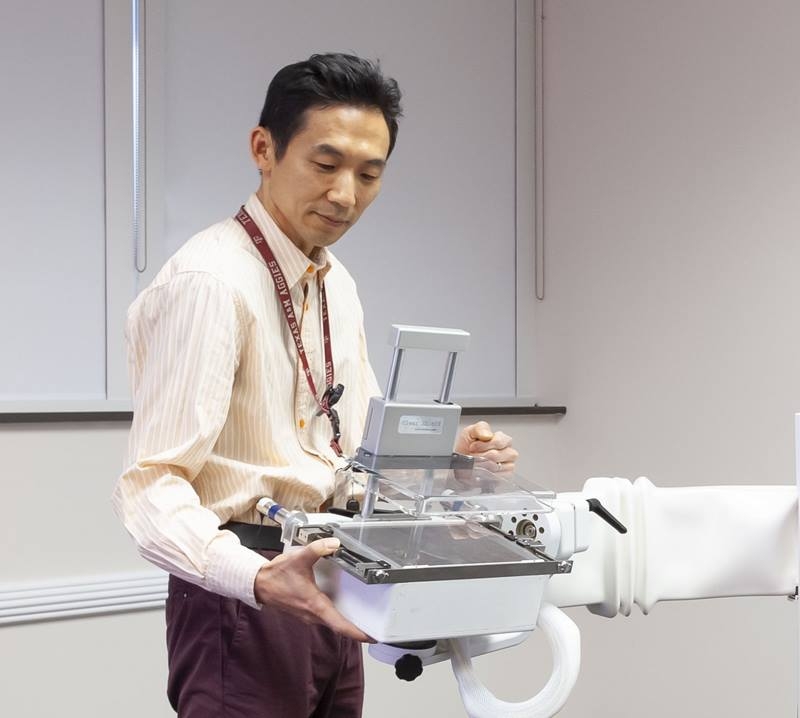
Better 3-D Imaging of Tumors in the Breast with Less Radiation
In breast cancer screening, an imaging technique based on nuclear medicine is currently being used as a successful secondary screening tool alongside mammography to improve the accuracy of the diagnosis. Now, a team is hoping to improve this imaging technique.
FSU physics researchers break new ground, explore unknown energy regions
Florida State University physicists are using photon-proton collisions to capture particles in an unexplored energy region, yielding new insights into the matter that binds parts of the nucleus together. “We want to understand not just the nucleus, but everything that…
Cesium vapor aids in the search for dark matter
Physicists at Mainz University manage to further narrow down range of the search for dark matter
Lyncean Technologies awarded €49M to provide world’s most advanced gamma-ray source
Lyncean Technologies, a pioneer in compact accelerator-based light sources for use in science and industry, on October 4th signed a contract with the “Horia Hulubei” National Institute for Research and Development in Physics and Nuclear Engineering (IFIN-HH), Romania, to build…
More energy means more effects — in proton collisions
The higher the collision energy of particles, the more interesting the physics. Scientists from the Institute of Nuclear Physics of the Polish Academy of Sciences in Cracow have found further confirmation of this assumption, this time in the high energy…
New metasurface design can control optical fields in three dimensions
A team led by scientists at the University of Washington has designed and tested a 3D-printed metamaterial that can manipulate light with nanoscale precision. As they report in a paper published Oct. 4 in the journal Science Advances , their…
How to dismantle a nuclear bomb
MIT team successfully tests a new method for verification of weapons reduction
MSU researchers lead team that observes exotic radioactive decay process
EAST LANSING, Mich. – Researchers from the National Superconducting Cyclotron Laboratory (NSCL) at Michigan State University (MSU) and TRIUMF (Canada’s national particle accelerator) have observed a rare nuclear decay. Namely, the team measured low-kinetic-energy protons emitted after the beta decay…
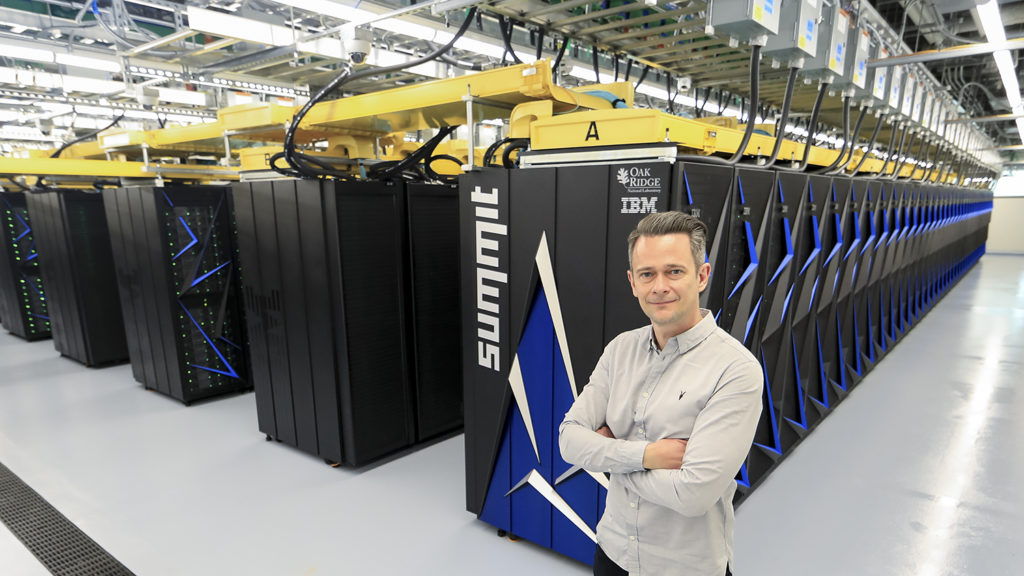
Gaute Hagen
Profiled is physicist Gaute Hagen of the Department of Energy’s Oak Ridge National Laboratory, who runs advanced models on powerful supercomputers to explore how protons and neutrons interact to “build” an atomic nucleus from scratch.

How to Get a Particle Detector on a Plane
Berkeley Lab is one of five sites around the globe that is building detector panels for an upgrade project that will improve the performance of a particle detector’s inner tracking system – including its resolution to take snapshots of particle collisions, its durability, and data-collection speed.
Pitt Nuclear Energy research awarded over $2 million in Department of Energy grants
PITTSBURGH (September 16, 2019) — The Stephen R. Tritch Nuclear Engineering program at the University of Pittsburgh’s Swanson School of Engineering has received three substantial grants from the U.S. Department of Energy’s (DOE) Nuclear Energy University Program (NEUP) totaling $2.3…

AIP Endowed Professor in History of Natural Sciences named at University of Maryland
Melinda Baldwin will join faculty starting in fall 2020
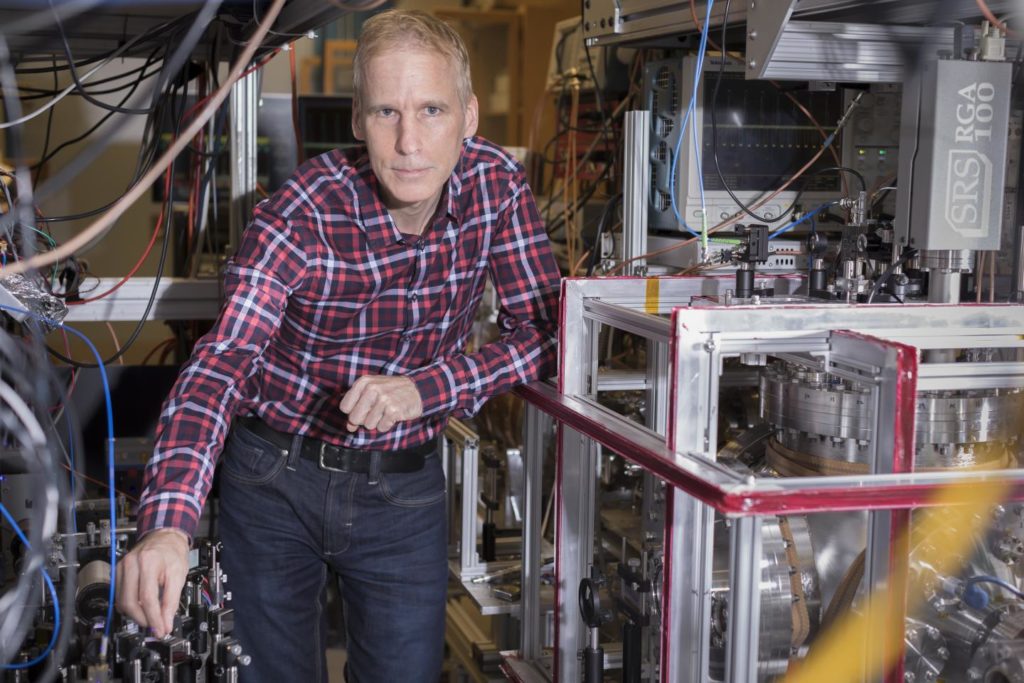
Scientists measure precise proton radius to help resolve decade-old puzzle
York University research confirms protons are smaller than expected
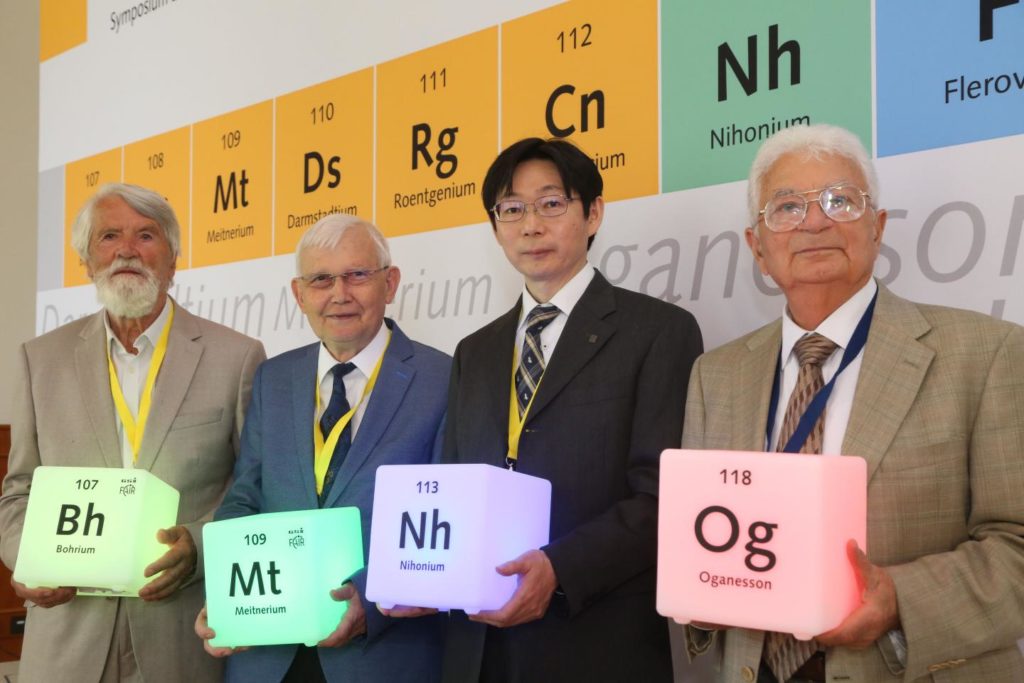
Historical gathering: International meeting of the discoverers of chemical elements
The GSI Helmholtzzentrum für Schwerionenforschung in Darmstadt (GSI), the Johannes Gutenberg University and the Helmholtz Institute Mainz are the organizers of this year’s TAN conference. There are currently 118 elements listed in the periodic table. 92 of them occur naturally…
DOE Issues Small Business Research and Development Funding Opportunity Announcement
The Department of Energy (DOE) Small Business Innovation Research (SBIR) and Small Business Technology Transfer (STTR) programs issued its first Funding Opportunity Announcement (FOA) for Fiscal Year 2020.
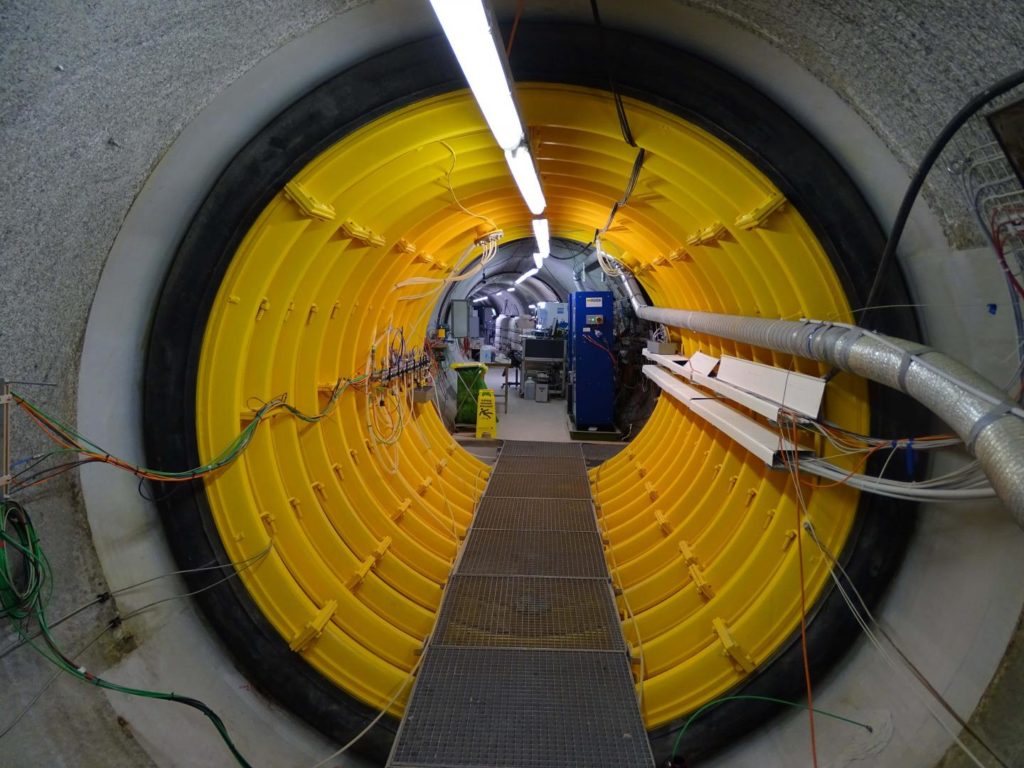
Simulation of the future in the Grimsel rock laboratory
Geologists at the University of Jena (Germany) investigate the stability of the geotechnical barrier
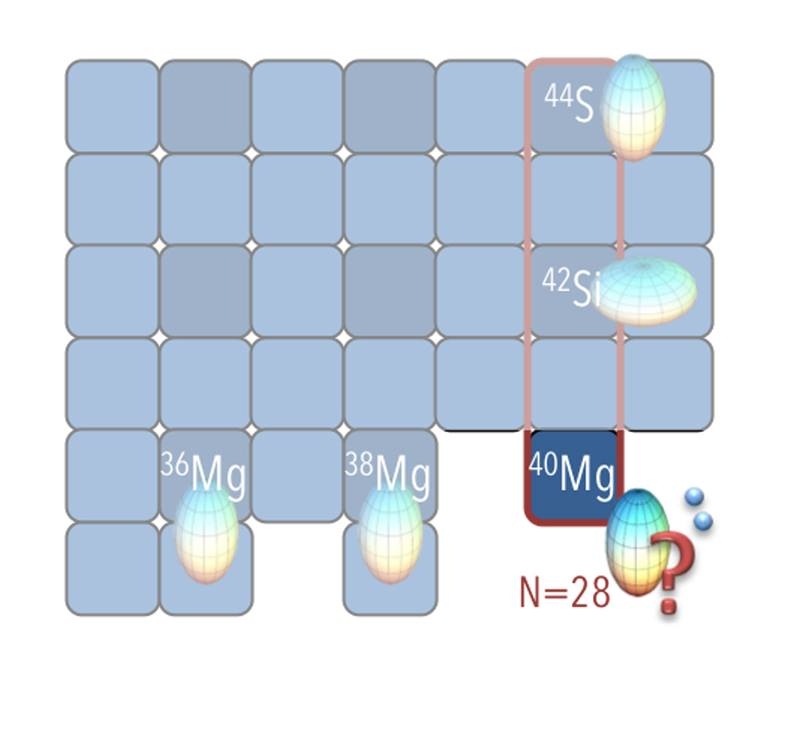
A Change in Structure for a Superheavy Magnesium Isotope
A recent measurement exploring the structure of magnesium-40 has shown a surprising change in the structure relative to expectations. This unanticipated change could be pointing to physics missing from our theories, such as the effects of weak binding between particles.
Department of Energy Selects 73 Scientists to Receive Early Career Research Program Funding
The Department of Energy’s (DOE) Office of Science has selected 73 scientists from across the nation – including 27 from DOE’s national laboratories and 46 from U.S. universities – to receive significant funding for research as part of DOE’s Early Career Research Program.
Krypton reveals ancient water beneath the Israeli desert
Getting reliable precipitation data from the past has proven difficult, as is predicting regional changes for climate models in the present. A combination of isotope techniques developed by researchers at Argonne and UChicago may help resolve both.

Considering the Container to Strengthen the Weak Force’s Signal
Kurtis Bartlett won the 2018 JSA Thesis Prize for making measurements that helped determine the weak charge of the proton.
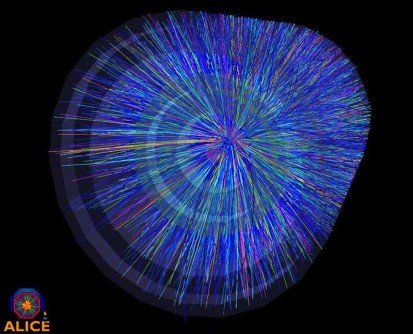
Explaining Light-Nuclei Production in Heavy-Ion Nuclear Collisions
Pairs of sub-atomic particles may catalyze reactions that happened moments after the Big Bang. The Science Nuclear physicists smash ions together to create and study the soup of quarks and gluons thought to fill the universe milliseconds after the Big…
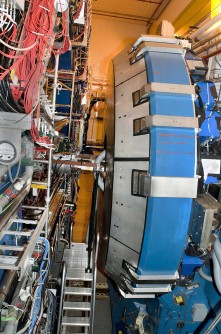
STAR Gains Access to “Wimpy” Quarks and Gluons
Low-momentum (wimpy) quarks and gluons contribute to proton spin, offering insights into protons’ behavior in all visible matter. The Science The “proton spin puzzle” concerns how much the building blocks of the proton, quarks and gluons, and their motion within…